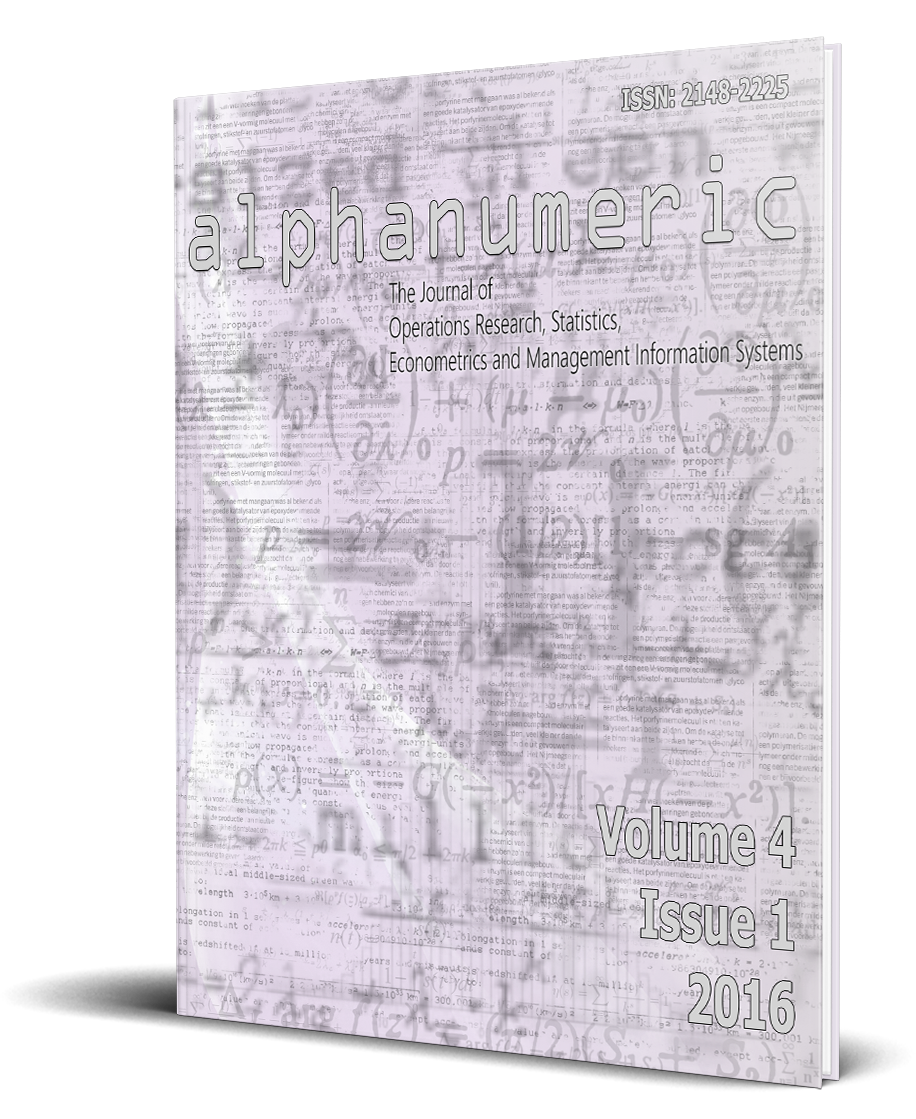
alphanumeric journal
The Journal of Operations Research, Statistics, Econometrics and Management Information Systems
Optimal City Street Network Design Under Uncertainty
Abstract
In this article, we address the problem of city street network design - specifically that of using one-way vs. two-way streets - from a different perspective than existing published literature. While at least one author acknowledges that motorist familiarity should be a factor in network design, this has not been empirically modeled. Instead of implicitly assuming motorists travel optimal paths, we explicitly model motorist unfamiliarity and uncertainty with an area. Furthermore, while the published research uses VMT or similar metrics to evaluate network design, we propose the ratio of actual VMT to optimal VMT as a more appropriate metric, with a target ratio of unity. We develop two simple idealized city street grids: one in which all streets are two-way, and a second of perfectly alternating one-way streets. Motorists are simulated traveling on both grids while varying the level of unfamiliarity and uncertainty. For each motorist, the ratio of actual to optimal VMT is measured and recorded. Our results suggest that travel efficiency for visiting motorists unfamiliar with an area will always be highest for one-way street networks. The policy this suggests is that one-way network city street designs should be preferred when there are likely to be a high proportion of motorists who are unfamiliar with the area. This conclusion goes against the prevailing wisdom, since most analysis evaluates network designs based on minimizing VMT, assuming motorists travel optimal paths.
Keywords: Monte Carlo Simulation, Transportation Modeling, Transportation Network Design
Jel Classification: L91, O18, R42
Belirsizlik Altında Optimal Şehir Sokak Ağı Tasarımı
Öz
Bu çalışmada, mevcut literatürden farklı bir perspektif ile özellikle tek yönlü sokakların çift yönlü sokaklarla karşılaştırılmalı olarak kullanıldığı şehir-sokak ağ tasarımı problemi ele alınmıştır. Literatürde sürücünün bölgeye aşinalığının ağ tasarımında bir faktör olması gerektiğini ifade eden en az bir çalışma mevcuttur ancak bu sonuç deneysel olarak modellenmemiştir. Bu çalışmada motorlu taşıt kullanıcılarının dolaylı yollar yerine en uygun yollarda seyahat ettiği varsayımı altında, motorlu taşıt kullanıcısının bir bölgeye aşina olmaması ve belirsizlik açık bir şekilde modellenmiştir. Buna ek olarak, önceki çalışmada ağ tasarımını değerlendirmek için VMT (bir aracın belirli bir bölgede belirli bir zamanda katettiği mesafenin mil cinsinden ifadesi) ya da benzer ölçüm birimleri kullanılmışken, bu çalışmada daha uygun bir ölçüm aracı olarak, gerçekleşen VMT ile optimal VMT’nin oranlandığı bir ölçüm birimi önerilmiştir. Araştırmada tüm sokakların çift yönlü olduğu ve alternatif tek yönlü olduğu iki adet basit şehir ve sokak çizelgesi geliştirilmiştir. Sürücüler için değişen düzeylerde bölgeye aşina olmama ve belirsizlik durumları iki çizelge için de simüle edilmiştir. Gerçekleşen VMT ile optimal VMT’nin oranı her bir sürücü için ölçülerek ve kaydedilmiştir. Analiz sonuçlarına göre bir bölgeye aşinalığı olmayan sürücüler için tek yönlü şehir ağının her zaman daha verimli olacağı bulgusu elde edilmiştir. Bu doğrultuda bir bölge ile aşinalığı olmayan sürücülerin yoğunlukta olduğu durumlarda tek yönlü şehir ağının tercih edilmesi gerektiği önerilmiştir. Sürücülerin en uygun yollarda seyahat ettiği varsayımı altında, çoğu analiz, ağ tasarımını VMT’yi minimize etme temelinde değerlendirdiğinden, bu sonuç yaygın görüşe farklı bir bakış açısı getirmektedir.
Anahtar Kelimeler: Monte Carlo Simülasyonu, Ulaştırma Ağ Tasarımı, Ulaştırma Modeli
Suggested citation
(). Optimal City Street Network Design Under Uncertainty. Alphanumeric Journal, 4(1), 11-16. http://dx.doi.org/10.17093/aj.2016.4.1.5000169371
References
- Zvi Drezner and George O. Wesolowsky. Selecting an Optimum Configuration of One-Way and Two-Way Routes. Transportation Science, 31(4):386–394, November 1997.
- Vikash V. Gayah and Carlos F. Daganzo. Analytical Capacity Comparison of One-Way and Two-Way Signalized Street Networks. Transportation Research Record, 2301:76–85, December 2012.
- G. Wade Walker, Walter M. Kulash, and Brian T. McHugh. Downtown Streets: Are We Strangling Ourselves with One-Way Streets? TRB Circular E-C019: Urban Street Symposium, 1999.
- Jinghui Wang, Lei Yu, and Fengxiang Qiao. Micro Traffic Simulation Approach to the Evaluation of Vehicle Emissions on One-way vs. Two-way Streets: A Case Study in Houston Downtown. Presented at the 92nd annual meeting of the Transportation Research Board in Washington D.C., January 2013.
2016.04.01.OR.01
alphanumeric journal
Pages 11-16
Received: Jan. 22, 2016
Accepted: March 14, 2016
Published: April 18, 2016
2016 Howe, JA.
This is an Open Access article, licensed under Creative Commons Attribution-NonCommercial 4.0 International License.

scan QR code to access this article from your mobile device
Contact Us
Faculty of Transportation and Logistics, Istanbul University
Beyazit
Campus 34452 Fatih/Istanbul/Türkiye
Bahadır Fatih Yıldırım, Ph.D.
editor@alphanumericjournal.com
+ 90
(212) 440 00 00 - 13219
alphanumeric journal
alphanumeric journal has been publishing as "International Peer-Reviewed Journal" every six months since 2013. alphanumeric serves as a vehicle for researchers and practitioners in the field of quantitative methods, and is enabling a process of sharing in all fields related to the operations research, statistics, econometrics and management informations systems in order to enhance the quality on a globe scale.

